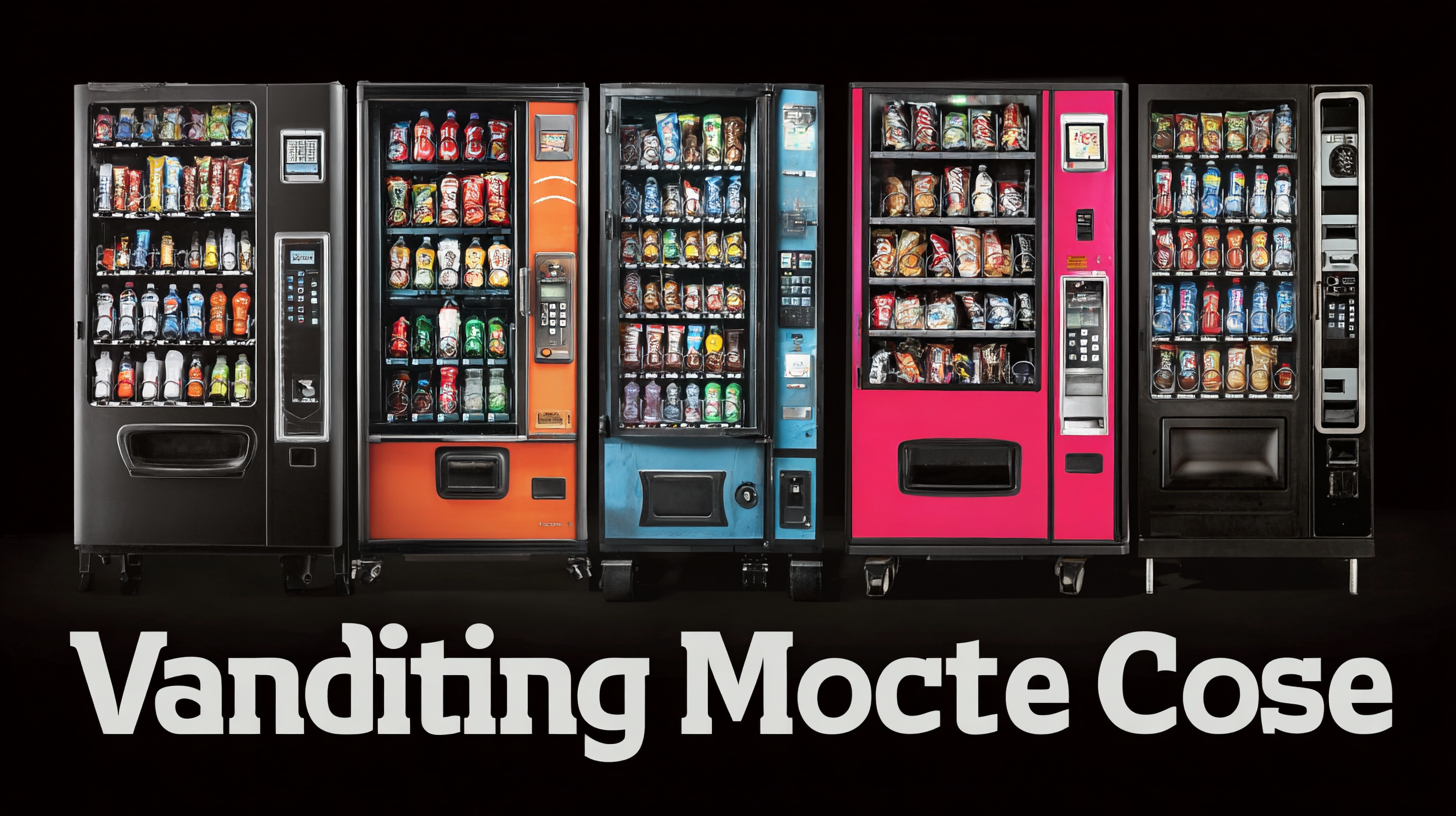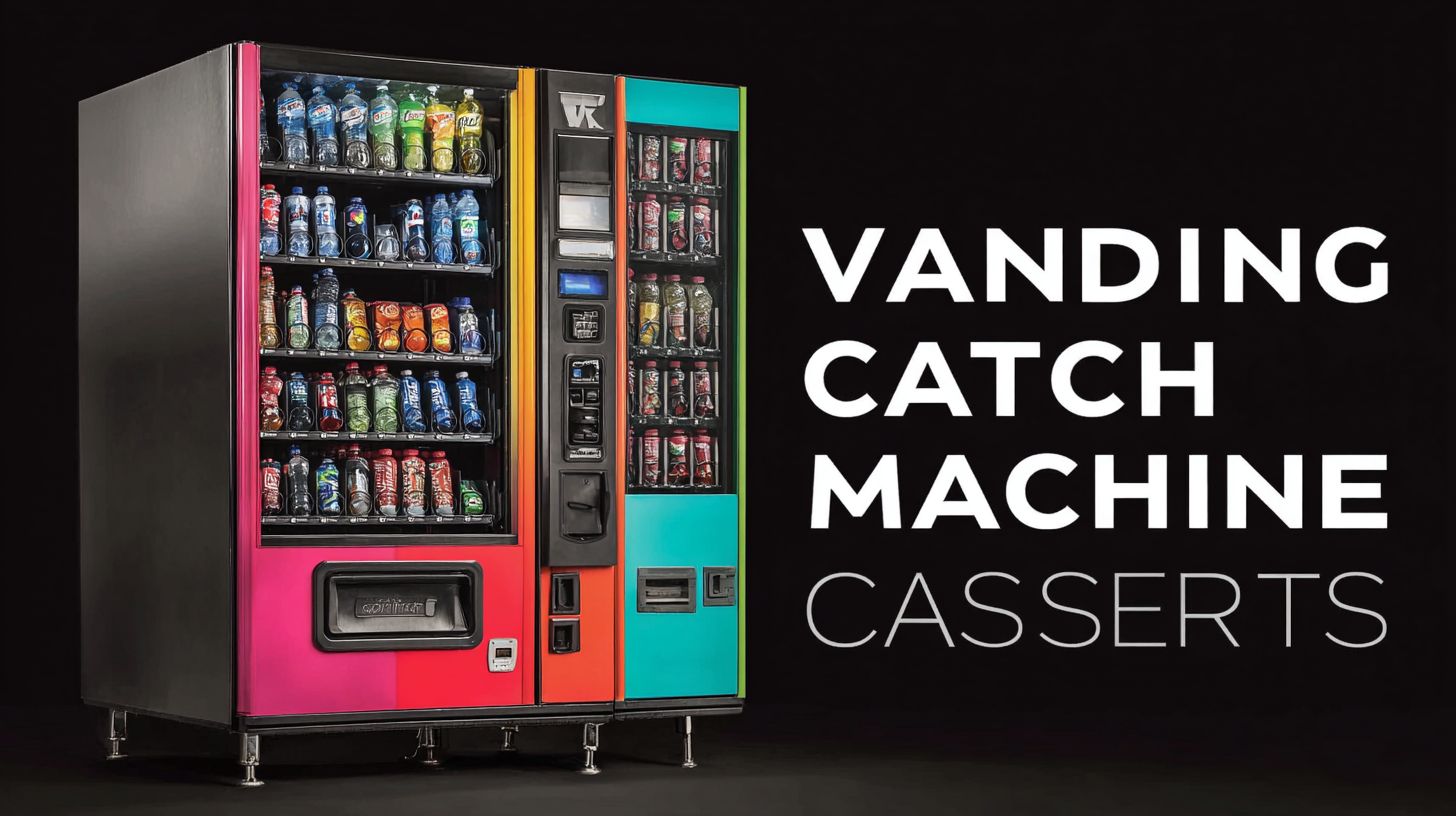Navigating the Challenges of Vending Machine Cost Analysis for Global Buyers
In the rapidly evolving world of vending machines, understanding the complexities of Vending Machine Cost analysis has become crucial for global buyers aiming to make informed purchasing decisions. As China strengthens its position as a formidable player in the manufacturing sector, recognized for its excellence and export capabilities, it is essential for international buyers to navigate the various factors that affect vending machine pricing. These factors can range from production expenses and technological advancements to shipping and logistics costs.

This blog will explore the multifaceted challenges of conducting a comprehensive Vending Machine Cost analysis, providing valuable insights to help global buyers effectively assess value and make strategic investments in this competitive market. By unraveling the intricacies of cost analysis, we aim to empower buyers with the knowledge needed to thrive in the global vending machine landscape.
Understanding the Key Factors in Vending Machine Cost Analysis
When navigating the complexities of vending machine cost analysis, global buyers must consider several key factors that greatly influence total expenditures. Initially, the type of vending machine plays a crucial role; different machines, such as carousels or traditional coil systems, have varying initial costs and operational efficiencies. Analyzing the specific products being offered, whether MRO tools or beverages, will also impact both upfront investment and return potential.

Tips for buyers include conducting a thorough market analysis to understand regional trends. For instance, the North American market for industrial vending machines is poised to surpass USD 6.93 billion by 2030, exhibiting significant growth. Buyers should also explore innovative vending solutions, such as solar-powered machines, which not only reduce operational costs but also align with sustainability initiatives.
Another essential aspect is payment options available on the machines. As the Asia retail vending machine market shows increasing demand for cashless transactions, integrating modern payment systems could enhance customer satisfaction and increase sales. Keeping these factors in mind will streamline the cost analysis process and support informed decision-making.
Identifying Hidden Costs in Global Vending Operations
When engaging in global vending operations, identifying hidden costs is crucial for effective cost analysis. Many buyers overlook expenses such as shipping fees, import duties, and compliance with local regulations. These charges can significantly inflate the initial investment and impact profit margins. Conducting a thorough analysis of all potential overheads before finalizing purchases can help mitigate unexpected financial strain.
Tip: Always request a detailed breakdown of shipping and handling fees from suppliers. Understanding these costs upfront can prevent surprises later on and enable better budgeting.
Moreover, ongoing operational expenses such as maintenance, restocking, and energy costs are often underestimated. Buyers should consider the total cost of ownership, which encompasses both initial and recurring costs. Implementing efficient inventory management systems can help minimize restocking expenses and optimize machine performance.
Tip: Regularly review energy consumption data to assess the efficiency of your machines. This can reveal opportunities for upgrades or changes in operation that may lower energy expenses over time.
Comparing Pricing Models: Traditional vs. Smart Vending Machines
As global buyers delve into the vending machine market, understanding the pricing models becomes crucial, particularly when comparing traditional and smart vending machines. Traditional vending machines, often characterized by their mechanical operations and cash-only payment systems, provide a straightforward cost structure. Typically, the initial purchase cost is lower, and maintenance expenses are limited. However, these machines may encounter higher operational costs due to cash handling and lower customer engagement, leading to potentially reduced sales.
In contrast, smart vending machines are revolutionizing the industry by incorporating advanced technologies such as touchscreens, mobile payment options, and real-time inventory management. While the upfront investment is generally higher, these machines offer greater flexibility and enhanced consumer interaction. Their ability to track sales data and customer preferences can lead to optimized product offerings and improved revenue. For global buyers considering the long-term value, the enhanced efficiency and increased sales potential of smart machines may outweigh the initial costs, ultimately reshaping their approach to vending machine investments.

Evaluating ROI: Measuring the Success of Vending Machine Investments
Evaluating the return on investment (ROI) for vending machine investments is crucial for global buyers navigating this sector. According to recent studies, the average ROI for vending machine operators can range from 25% to 50%, depending on factors such as location, product selection, and management practices. A well-placed vending machine in high-traffic areas can generate significant revenue, making it essential for investors to calculate potential income accurately.
To measure the success of these investments, operators should consider metrics such as net operating income (NOI), which is vital for assessing profitability. NOI accounts for all revenue generated from the vending machine, minus operational expenses. By analyzing this data, investors can make informed decisions on future placements, product offerings, and pricing strategies. As the market evolves, embracing strategic approaches to marketing—similar to emerging trends in influencer marketing—can also enhance vending machine performance, driving higher returns and customer engagement in the competitive landscape.
Navigating the Challenges of Vending Machine Cost Analysis for Global Buyers - Evaluating ROI: Measuring the Success of Vending Machine Investments
| Region | Initial Investment ($) | Monthly Revenue ($) | Monthly Expenses ($) | Net Profit ($) | ROI (%) |
|---|---|---|---|---|---|
| North America | 10,000 | 2,500 | 800 | 1,700 | 20.4 |
| Europe | 12,000 | 2,800 | 900 | 1,900 | 19.0 |
| Asia | 8,000 | 2,000 | 600 | 1,400 | 17.5 |
| Latin America | 9,000 | 1,800 | 500 | 1,300 | 17.2 |
| Africa | 7,000 | 1,500 | 400 | 1,100 | 18.5 |
Strategies for Cost Reduction in Vending Machine Management
In the competitive landscape of vending machine management, reducing costs while maintaining service quality is essential for global buyers. One effective strategy is to conduct a comprehensive analysis of operational expenses, including maintenance, restocking, and energy consumption. By utilizing data analytics, operators can identify peak usage times and product turnover rates, enabling them to optimize inventory and reduce waste. Implementing smart vending technology can also provide real-time insights into machine performance, allowing for timely adjustments that can further enhance efficiency.
Another approach to cost reduction involves strategic partnerships with suppliers. By negotiating bulk purchasing agreements, buyers can secure lower prices on popular products, reducing overall costs. Additionally, integrating local sourcing can minimize transportation expenses and support community businesses, creating a sustainable supply chain. These strategies, paired with regular performance assessments, ensure that vending machine operations remain cost-effective while meeting consumer demands effectively. Emphasizing a proactive and strategic mindset in vending management can lead to significant savings and improved profitability for global buyers.
Navigating the Challenges of Vending Machine Cost Analysis
This chart illustrates the average monthly operational costs across different categories involved in vending machine management. The categories include Maintenance, Inventory, Location Rent, and Utilities. Analyzing these costs can help global buyers identify areas for potential cost reduction.